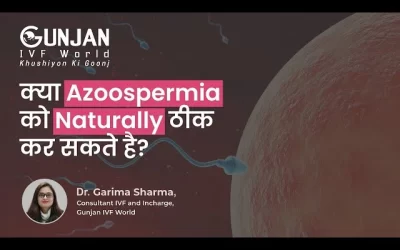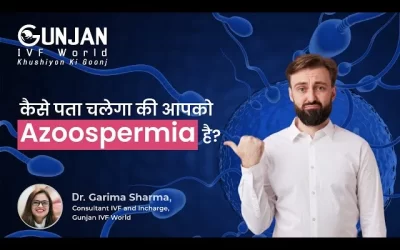20+ Years Of Experience as Fertility Specialists
20 Years Of Experience as a Fertility Specialists
National Fertility Awards 2023
Call Us
+917042874533
Azoospermia is a condition in which no sperm are present in the ejaculate (or semen) after orgasm. About 1% of all men and 10% to 15% of infertile men have azoospermia. A healthy testis may generate over two crore sperm in one testis in only 24 hours.
The optimum course of therapy for azoospermia is condition-specific and considers both the male partner’s fertility and the female partner’s possibility of having children. Approximately one percent of all males and ten to fifteen percent of infertile men are affected by azoospermia.
Also Read : Is Azoospermia Treatable
Male Reproductive System
A man’s reproductive systems include:
- Testis, or testicles:
These engage in a process termed spermatogenesis, whereby sperm (male reproductive cells) are created.
- Seminiferous tubules:
Most of the testis’ tissue is made of these small tubes.
- Epididymis:
This is the framework at the back of each testicle where sperm are transported and stored after maturity.
- Vas deferens:
This muscular tube emerges from the epididymis, travels into the pelvis, and then turns to enter the seminal vesicle.
- Seminal vesicle:
Most of the fluid components of semen are produced and stored in this tubular gland. The vas deferens connect to the seminal duct, a straight duct formed as the vesicle contracts.
- Ejaculatory duct:
This form when the duct carrying the seminal vesicles joins the vas deferens. The urethra is linked to the rest of the body through the prostate gland, via which the ejaculatory duct travels.
- Urethra:
The urethra drains urine from the bladder and sperm from the vas deferens while passing through the penis.
Ejaculation is the process by which sperm travel from the testis and epididymis into the vas deferens. The sperm travels through the vas deferens as it contracts and becomes tighter.
The seminal fluid advances towards the urethra, gaining secretions from the seminal vesicle along the way. Passing via the prostate gland, the seminal fluid picks up a milky fluid that combines with the sperm to become semen before it reaches the urethra.
Finally, the penis releases semen into the urethra during ejaculation.
A sperm count of 15 million per milliliter or above is considered normal. In men, low sperm counts are called oligozoospermia or oligospermia, and they occur when the sperm concentration is less than 15 million/mL. The absence of detectable sperm in the ejaculate is diagnostic of azoospermia.
Book An Appointment
Follow Us On
Types of Azoospermia
There are two primary kinds of azoospermia, which are as follows:
Obstructive Azoospermia
In certain places, it might be possible to prevent sperm from leaving the testicles. Potential causes of blockage include the epididymis (the area of the testicle where sperm develop), the vas deferens (the tube that carries sperm from the testicle to the urethra), and the ejaculatory duct (the apertures on each side of the tube).
Non-Obstructive Azoospermia
A lack of sperm in a man’s ejaculate indicates that his sperm production is unimpeded or that his sperm production is so low that it is not detectable. This is termed severe oligospermia, and although it’s still very problematic, sperm retrieval and ART may be able to make pregnancy possible.
Following are a few possible reasons:
Genetic mutations
Heavy metal exposure
Hormone imbalances
Radiation (for treating cancer)
The usage of illegal substances or certain medications
Varicoceles (enlarged veins)
Y-chromosome deletions
Also Watch : Frequently Asked Questions About Infertility?
Conclusion
The outlook for each case of azoospermia is unique. It is possible to treat many of the underlying causes of azoospermia. Both the root cause of your azoospermia and potential treatments will be determined in collaboration between you and your healthcare team. In most cases, azoospermia may be reversed by correcting underlying hormonal issues or removing the obstructive reason. Even if testicular problems are to blame, healthy sperm may be harvested for IVF.
Share this with
Related Videos
Can We Treat Azoospermia Naturally?
Azoospermia refers to a zero sperm count or a zero sperm count, which must be shown in two consecutive tests performed at an interval of around 4-6 weeks between each report
Azoospermia Symptoms & Diagnosis
Azoospermia is a disease that affects more than 10-15% of infertile males. This issue might exist from birth or manifest itself later in life
Follow Us On
About Author





